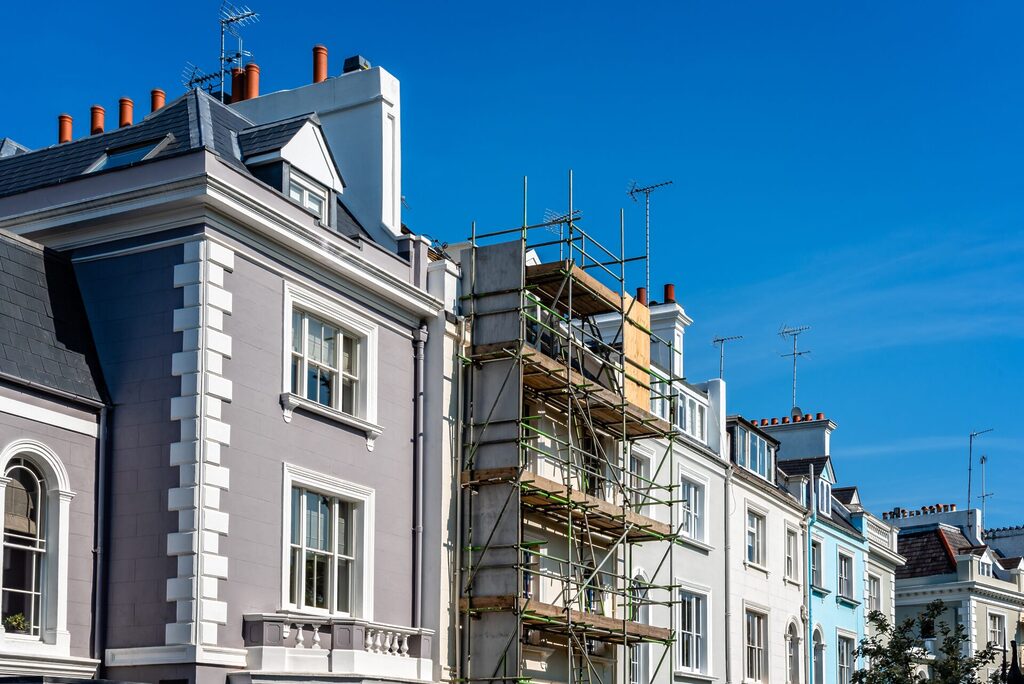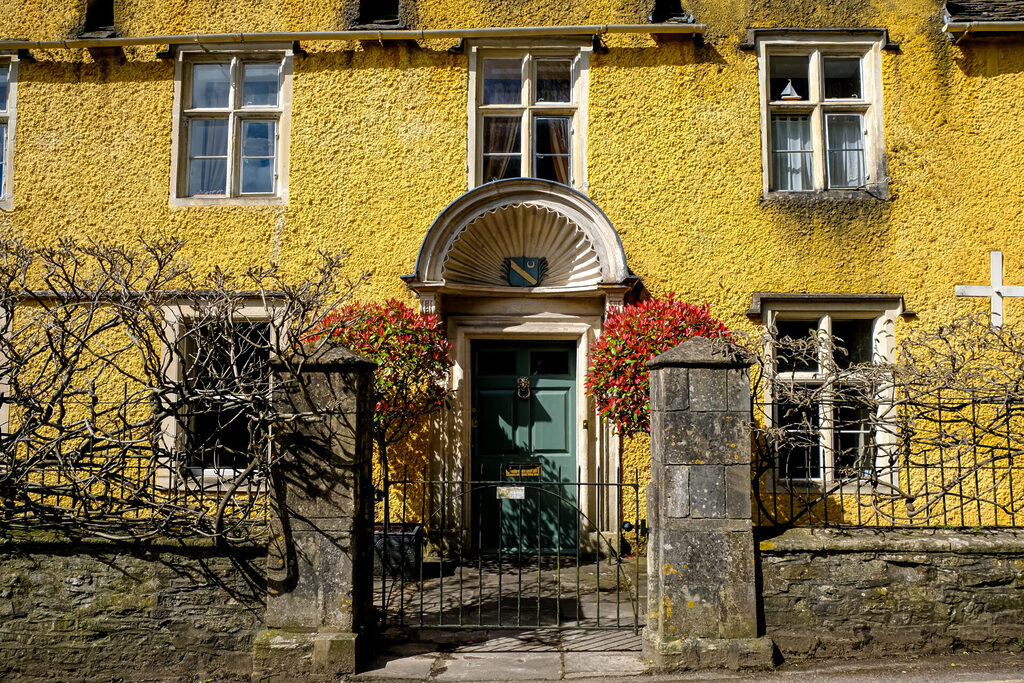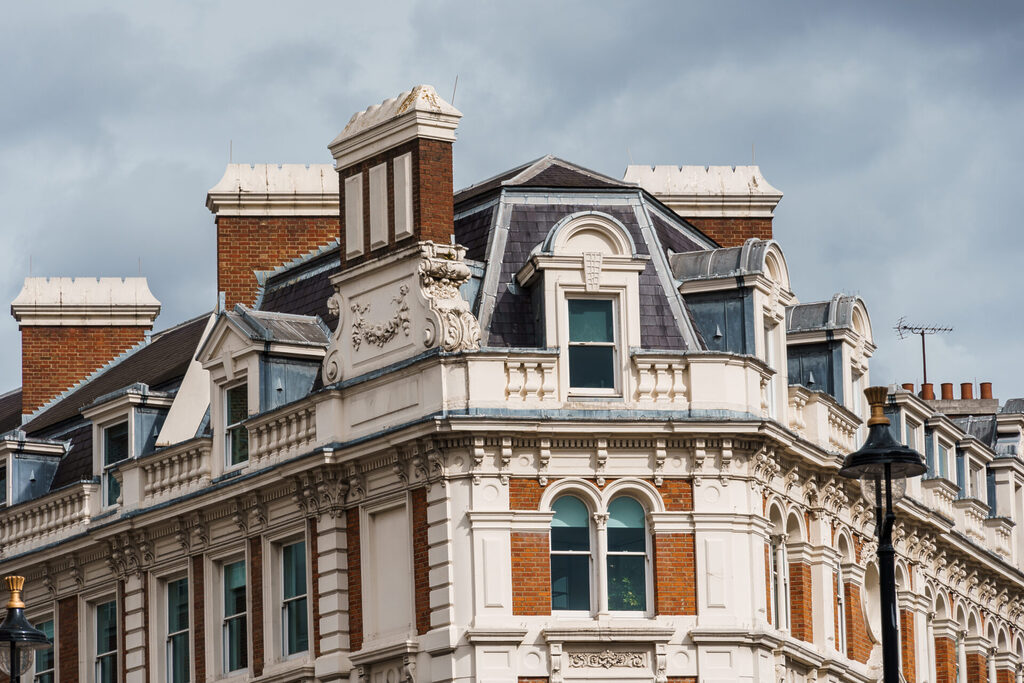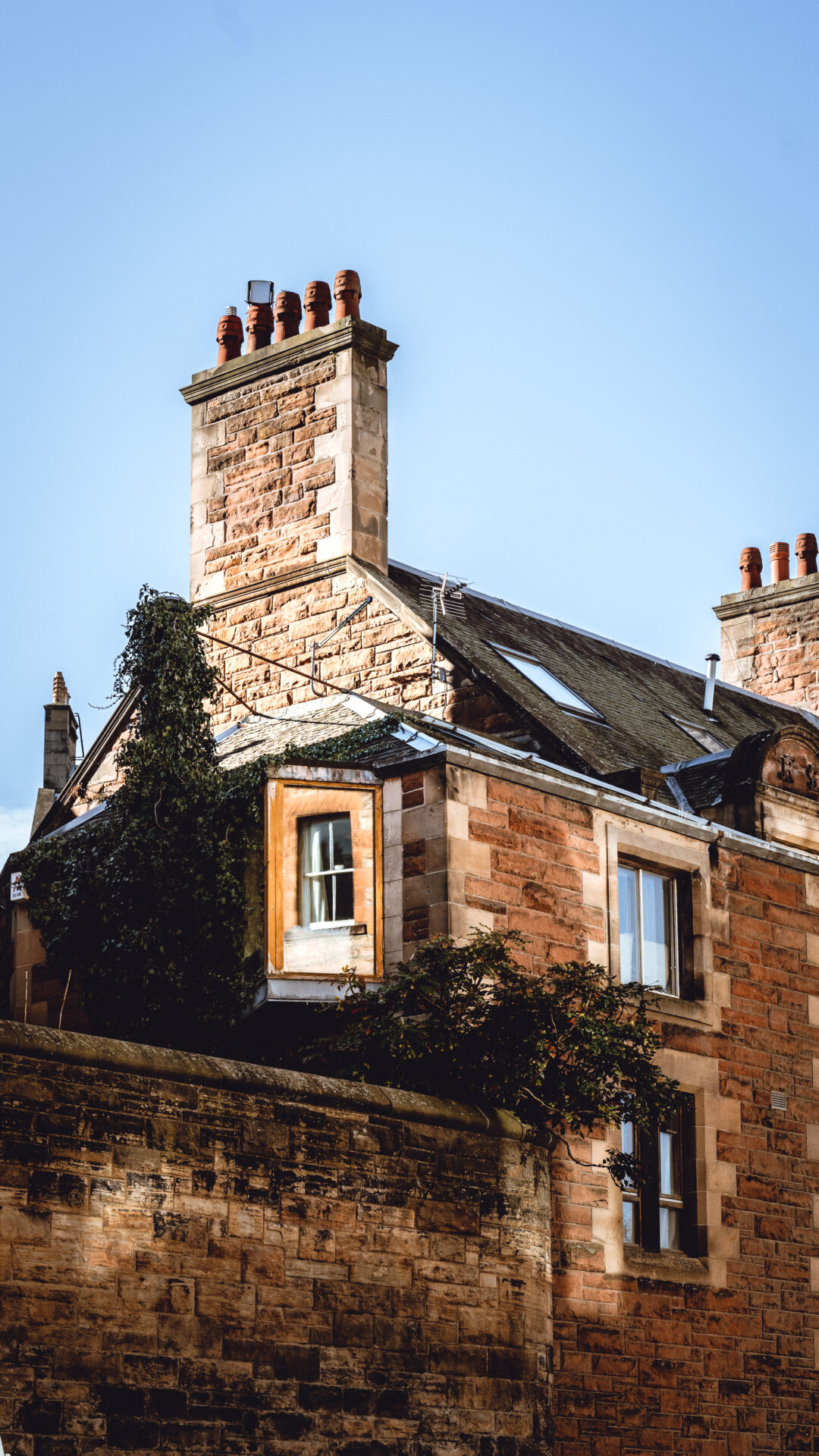Last Updated on 17 October 2024 by Team GFD
A comprehensive guide to listed building consent
In the UK, altering a listed property requires special legal approval known as listed building consent. Listed buildings are categorised into three grades: Grade I, Grade II*, and Grade II.
Looking to update your listed property? We’re here to help you navigate the ins and outs of listed building consent so you can preserve its character while making the changes you need for modern living.
Owning a listed building isn’t just about living in a beautiful, historically significant property—it comes with a responsibility to preserve its unique character.
This means that any modifications, repairs, or even routine maintenance might require special permission in the form of listed building consent.
It’s crucial to understand when listed building consent is required and how the process works.
Looking for something specific? Jump to it:
- What is listed building consent
- When is listed building consent required
- When is listed building consent NOT required
- Listed building consent application process
- Importance of listed building consent
- FAQs
What is Listed Building Consent?
Listed building consent is a form of legal approval required in the UK for certain alterations or modifications to a listed property.
The purpose is to protect buildings deemed historically or architecturally significant, ensuring that any changes preserve their character.
These buildings are part of the national heritage, and listed status means they are protected by law.
The Types of Listed Buildings
In the UK, listed buildings fall into three categories—Grade I, Grade II*, and Grade II. Don’t worry, we’ll break down what each of these means and how they might impact your home improvement plans.
- Grade I: These are buildings of exceptional interest. Only 2.5% of listed buildings fall into this category. Examples include iconic structures like cathedrals, castles, or stately homes.
- Grade II*: These buildings are particularly important and of more than special interest, accounting for about 5.5% of listed buildings.
- Grade II: The vast majority (around 92%) of listed buildings fall into this category. They are of national importance and special interest, though perhaps not as architecturally significant as the higher grades.
Regardless of the grade, any alterations to a listed building that might affect its character will require listed building consent.
This applies to both the interior and exterior of the building, and it’s crucial to understand when this consent is necessary to avoid legal complications.
When is Listed Building Consent Required?
Determining when listed building consent is needed can sometimes feel like navigating a maze, especially for first-time listed property owners.
To simplify things, listed building consent is typically required whenever the proposed works would affect the building’s character as a historical or architectural asset.
Let’s break down some of the key scenarios where you’ll need to seek consent before making any changes.
Alterations to Exterior Features
The exterior of a listed building is one of its most defining characteristics.
Any changes to its outward appearance can significantly impact its historical integrity, so these changes almost always require listed building consent.
Common exterior alterations that require consent include:
- Window replacements: Replacing timber windows with modern alternatives like UPVC is a common request, but these changes will need to be approved to ensure they don’t detract from the building’s appearance.
- Roof alterations: Whether it’s replacing old roof tiles or changing the shape of the roof, any work on the roof is likely to need consent.
- Extensions: Adding a new extension, such as a conservatory or garden room, will certainly require listed building consent. Even if the extension is designed to be in keeping with the original architecture, formal approval is essential.
- Repainting the exterior: If you’re simply refreshing the existing colour, you likely won’t need consent. However, if you’re changing the colour entirely, especially to one that might alter the building’s visual impact, listed building consent will be required.

Changes to Interior Layout and Structure
It’s a common misconception that listed building consent only applies to the exterior of a property.
In fact, the interior layout and key structural features are also protected under listed status.
This means that any changes affecting the internal character or structure of the building will require approval. Examples include:
- Removing or altering internal walls: Whether for creating an open-plan living space or simply altering room layouts, structural changes to interior walls will require consent, especially if they involve load-bearing walls or period features like timber framing.
- Modifying staircases or fireplaces: Many listed buildings have historically significant features like original staircases, fireplaces, or ceiling beams. Altering or removing these would undoubtedly need consent.
- Adding new internal features: Installing modern conveniences like new kitchens or bathrooms is generally acceptable, but it’s vital to avoid altering any historically significant aspects of the interior, such as panelling or ceiling mouldings.
Repairs and Maintenance Considerations
Routine repairs and maintenance are an inevitable part of owning any property, but listed buildings require a more cautious approach.
While basic maintenance doesn’t always need listed building consent, repairs that involve replacing or altering original materials will typically require approval. This includes:
- Replacing roofing materials: Switching out slate for modern composite materials may seem like a practical improvement, but it could drastically alter the building’s appearance and character. Consent would be needed to ensure any changes are sympathetic to the original design.
- Repointing brickwork: Repointing with the wrong type of mortar or cement can have a significant impact on the building’s appearance and structural integrity. It’s important to match original materials as closely as possible, and consent may be required for large-scale repairs.
- Replacing timber features: Many listed buildings feature wooden beams, window frames, and doors. If these need to be replaced due to rot or damage, the new materials must closely match the originals, and listed building consent may be needed.

Once you know what you can and can’t do to your listed building you can experience all the benefits of aluminium windows (or not)
Impact on the Surrounding Environment
Listed buildings often sit within conservation areas, meaning that their surroundings are also protected.
Any changes to the surrounding environment, such as the garden, walls, fences, or outbuildings, may require consent.
Even minor adjustments like altering a garden wall or installing a new gate could potentially impact the overall setting of the property.
Demolition or Partial Demolition
One of the strictest aspects of listed building consent is the control over demolition.
Listed building consent is mandatory for demolition, and this permission is rarely granted unless it’s demonstrated that there is no viable alternative to preserve the building.
Local authorities typically take a stringent approach to demolition requests, so expect a high level of scrutiny.
When is Listed Building Consent NOT Required?
While the rules around listed building consent are strict, there are some cases where it’s not necessary to seek formal approval.
Understanding these exceptions can save time and effort while ensuring that your property remains compliant with legal requirements.
Routine Maintenance
Routine maintenance like cleaning gutters, repainting in the same colour, or general upkeep often doesn’t require listed building consent, but it’s always essential to ensure that even small tasks don’t impact the character of the property.
For example, if you’re repainting with a modern material that alters the visual appeal of the building, or undertaking work that replaces historic materials, consent may be needed.
Always check with your local planning authority if you’re unsure.
Temporary Fixtures and Fittings
You can make temporary changes to your listed building without needing listed building consent.
This includes putting up seasonal decorations, installing scaffolding for maintenance work, or hanging banners for a short-term event.
However, temporary should mean just that—any changes that could become permanent will need to be reviewed.
Minor Interior Changes
Non-structural interior changes, such as painting, changing flooring, or installing non-permanent fixtures, usually don’t require listed building consent.
However, this only applies if you’re not altering or removing historically significant features like panelling or beams.
Emergency Repairs
If your listed building suffers sudden damage due to an event like a storm or flood, you may be able to carry out emergency repairs without consent.
For example, fixing a leaking roof or replacing a broken window might not require approval if it’s to prevent further damage.
That said, you should notify your local authority as soon as possible after the work is completed.
Listed Building Consent Application Process
Now that we’ve covered when listed building consent is required, let’s look at how to apply for it. While the process can seem daunting, with the right preparation and understanding, you can navigate it smoothly.
Initial Research and Consultation
Before starting any work, it’s crucial to carry out thorough research.
Begin by checking the building regulations for your property with your local planning authority.
They’ll be able to tell you whether listed building consent is needed and may offer initial guidance on how to proceed.
You might also want to consult with a heritage consultant or conservation officer.
These professionals specialise in listed buildings and can offer expert advice on maintaining the character of your property while carrying out necessary work.
Preparing and Submitting the Application
Ready to apply for listed building consent? You’ll need to gather your plans, documents, and a good dose of patience!
This should include architectural drawings, descriptions of the materials you’ll be using, and any justifications for the proposed changes.
The more thorough and detailed your application, the less likely it is to encounter delays.
Working with Conservation Officers
Once your application has been submitted, a conservation officer will likely be assigned to review it.
Their role is to ensure that any changes align with the building’s historical importance.
They may suggest modifications to your plans or request additional information, so it’s important to remain flexible and open to their guidance.
The Decision-Making Process
The decision-making process can take several weeks or even months, depending on the complexity of the project and the local planning authority’s workload.
During this time, your application will be assessed by heritage experts and other relevant bodies.
If approved, you’ll receive listed building consent, allowing you to proceed with the work. If rejected, you’ll need to revise your plans and potentially resubmit.

If you need more information about listed building consent, you can find more at Historic England.
Importance of Obtaining Listed Building Consent When Required
The importance of obtaining listed building consent cannot be overstated.
Ignoring this requirement can have serious legal and financial consequences, not to mention the risk of damaging the integrity of your property.
Here are some of the potential outcomes of failing to comply:
Legal Penalties and Fines
Unauthorised work on a listed building is a criminal offence in the UK, and local authorities have the power to prosecute offenders. Fines can be substantial, and in extreme cases, custodial sentences can be imposed. It’s far better to seek consent upfront than to face legal action later on.
Reversal of Unauthorised Changes
In addition to legal penalties, property owners may be required to reverse any unauthorised changes. This can be a costly and time-consuming process, particularly if significant alterations have been made. In some cases, reversing these changes can even result in further damage to the building’s historical features.
Long-Term Impact on Property Value
Listed buildings are often highly desirable due to their historical significance, but unauthorised work can devalue them considerably. Prospective buyers are likely to be put off by a property that has been altered without consent, as they may inherit the responsibility for rectifying the situation. By ensuring your property complies with listed building regulations, you can preserve its value and appeal.
Understand Listed Building Consent with GFD Homes
Owning a listed building offers a unique connection to the past, but it also comes with a set of responsibilities to ensure its preservation.
There are certain works where listed building consent might be required, depending on how the work is carried out.
Consulting your local authority early on in your home improvement project journey can help determine whether consent is necessary.
Need advice or have some more questions about listed building consent? Feel free to contact our team on 01642 309576 for help.
FAQs about Listed Building Consent
What is required for listed building consent?
Listed building consent is required for any work that would affect the character of a listed building. This includes alterations to both the exterior and interior, as well as structural repairs, demolitions, and changes to the surrounding environment.
What is the 4 year rule for listed building consent?
The “4 year rule” allows unauthorised building works to be legalised if no enforcement action is taken within four years. However, this rule does not apply to listed buildings, where unauthorised changes can be challenged indefinitely.
What can you do without listed building consent?
Routine maintenance, minor interior changes, and emergency repairs can generally be carried out without listed building consent, provided they don’t affect the building’s historical or architectural significance.
What is listed building consent section 19?
Section 19 of the Planning (Listed Buildings and Conservation Areas) Act 1990 allows for alterations to a listed building’s interior layout without affecting its external appearance. The key is ensuring these changes are in line with conservation goals and do not compromise the character of the building.
For more information on related building regulations, check out our guide on do I need planning permission for a roof lantern to see how other types of property improvements are managed.

